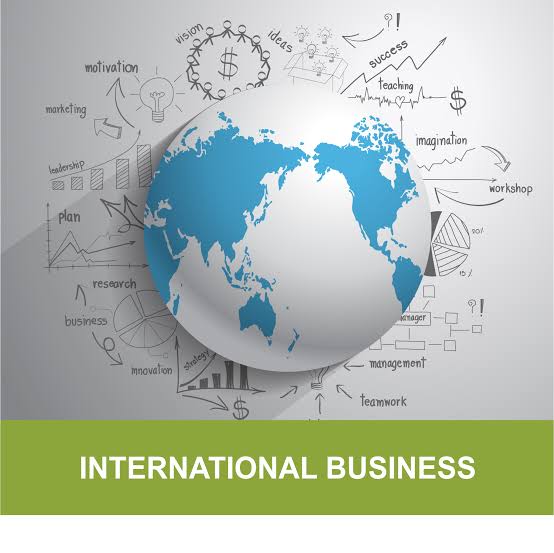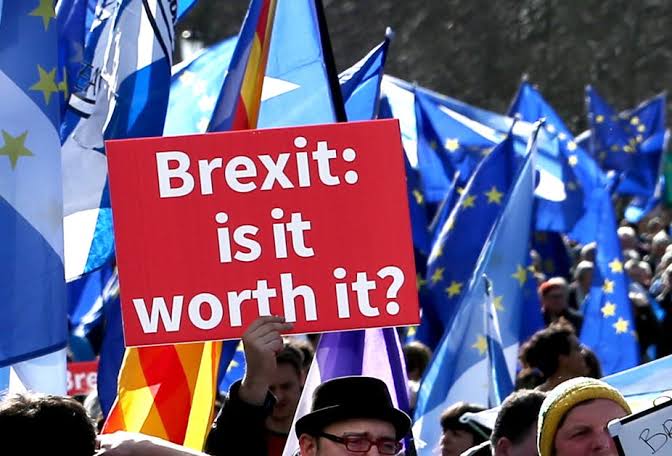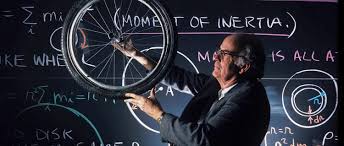Complete link to the content:
https://docs.google.com/document/d/13NO1JldQ07sDVBQNIjjZRaEIovGS5fmsE3NBavW5Wsk/edit?usp=drivesdk
Abstract
This paper explores three published articles that evaluates and summarizes the results from researches conducted on the dilemma between global and local organizations that are seeking to operate on an international basis. The article scrutinizes the entry strategies, looking into the pros and cons of different types of market entry strategies, and emphasizes on the potential risks and rewards associated with each type of entry strategy. Also, a range of external and internal markets factors have been examined to understand the contribution of global drivers, local needs, and its advantages. This paper examines Peter J. Buckley’s and Mark C. Casson’s research (1998) on analyzing foreign market entry strategies alongside with two other recent papers in this field in order to fully understand the potential risks and rewards of each strategy involved in international markets.
Keywords: Market entry strategies, Global local dilemma of international organizations
The Global-Local Dilemma of International Organisations and the Potential Outcomes Associated with Each Type of Entry Strategy
Numerous studies have been conducted regarding various facets of global- local markets with keen analysis of different market entry strategies, focusing on international drivers, geographic advantages, market selection, and mode of entry (Young, Stephen, Hamill, Wheeler & J. Richard Davies, 1989). Hymer (1976) and Kindleberger (1969) stated the results of foreign market trading, showcasing that an established firm seeking foreign market entry must have strong grip over “compensating advantage” so that it holds enough power to overcome the “costs of foreignness”. This paper examines Peter J. Buckley’s and Mark C. Casson’s research (1998) against other research to propose that additional research be conducted to better evaluate the best market entry strategies for foreign organizations till date.
Literature Review
The global-local dilemma mainly refers in the context of the extent to which products and services should be equalized for trading across the country boundaries in order to meet the requirements of a specific national market (Yip, & George, 1982). For example, if you compare the Apple company with the McDonald’s, both would have strategies completely different from each other. Apple requires very little adaptation to the local environment, whereas, McDonald’s need to consider the taste, law, customs, and market structure in its global strategy (Lafotaine, & Leibsohn, 2004). Therefore, the global-local dilemma can be mainly overcomed by building strong marketing strategies (Vernon, & Raymond, 1966)
Among all strategies, the entry level marketing strategy should be the strongest in order to hold the positioning of firm in the market (Vernon, & Raymond, 1966). While comparing the external factors for foreign entry, the four key elements are to be mainly considered according to the Pestel framework: Political environment of the region; Economic conditions and GDP (Gross Domestic Production) of the country; Social factors, for example, population and lifestyle; Legal regime of the region (Buckley, & Ghauri, 1993).
In J. Buckley’s and C. Casson’s study (1998), it was reviewed through three empirical studies on foreign market entry that out of other strategies, introduction of organizations to technological features and advanced marketing skills as the key elements can best contribute to a successful foreign entry (Hirsch, 1976; Horst, 1972). Considering a firm based in a home country that seeks to trade initially in a foreign market, it is essential for the firm to chalk out the setup costs and the recurrent costs that takes place in a stable environment, beforehand and conclude those separately (Buckley, & Ghauri, 1993). On an international platform, a successful market distribution of the particular product depends upon its marketing activity (Buckley & Casson, 1998). A good market entry strategy demands thorough investigation of the targeted customers’ needs, and conservation of product reputation by providing satisfactorily services to its consumers (Contractor & Lorang, 1988). One of such keys for an apt strategy is to carry out the marketing activities in a way that is most applicable to its buyers (Anderson, Erin & Coughlan, 1987). To reach this key, a few market factors that are to be essentially considered are: The location and the cost to trade from the home country to the location; Internalization factors; Cultural factors including trust and psychic differences; Market competitiveness; Adaptation costs, etc. that determines the decision of foreign market entry of the firm (Agarwal, Sanjeev & Ramaswami, 1992).
Internationalization drivers and geographic advantages of the region are the two most important factors that forms the structure of an international strategy. A well formed international strategy leads to proper market selection and choice of the mode of entry into the foreign market (Buckley, 1992).
Considering the internationalization drivers, the four main constituents of the Yip’s four drivers include –
Market Drivers: Based on how attractively the firm presents its product to the international market, relative to its domestic market (Barney, 1991). For instance, the computer mouse was invented by Xerox. However, Steve Jobs made it a market driver by using the technology in Mac (Dernbach, 2014).
Cost Drivers: Based on the range of cost reduction of product trade through international expansion. This is essential for every foreign entry strategy (Barney, 1991).
Competitive Drivers: Based on the reason for switching into global markets. This mainly focuses on whether the company can sustain the competitiveness even without switching to global markets (Barney, 1991). A good example for this can be Colgate Palmolive which can sustain very well in its domestic market with its huge brand value.
Government Drivers: Being the most important factor, it considers whether the authority and governance of the region support international trading and development (Barney, 1991).
There are mainly 4 alternative modes of entry into the international markets, namely:
Exporting; Joint ventures and alliances; Licensing; Wholly owned subsidiaries.
While licensing, and exporting show a higher tradability over wholly owned subsidiaries, and joint ventures, exporting, and wholly owned subsidiaries hold a broader competitive advantage over licensing, and joint ventures. Each mode of entry strategy have its own advantages and disadvantages in the international markets. Before moving forward with the benefits and drawbacks of different entry strategies, it is important to understand the concept of strategy by the definition of international markets. A Strategy can be well defined as the direction and scope of an organization with the aim of fulfilling stakeholder expectations, working in view of long term benefits, which can achieve advantage through its changing configuration (Sanger, & David, 1985).
History has evidenced that most firms often choose exporting as the foremost alternative mode of international entry since the method seems to be relatively simpler as the firm can rely on a number of intermediates for domestic production assistance. The foreign clients mainly contribute to the marketing and sales of the firm. (Allen, & Raynor, 2004). Here, the newly arised mode of communication, the Internet itself can serve the purpose of foreign trading, saving much of traveling costs. Also, the economy of scales lie in the home country.
However, the firm gets greatly dependent on the export intermediaries for business. This exposes the company to trade barriers as well, not ignoring the transportation costs, tariffs and law of either of the countries (Daniels, & Radebaugh, 1997). The major drawback lies in the detailed attention that this mode of marketing demands. An effective exporting demands complete attention to every detail for the marketing company to become successful. If you consider an example in exporting, the exporter requires deciding the use of different intermediaries and the frequency of its use (Welch, & Wilkinson, 2004). Apart from that, they need to choose a transportation method that suits their budget and assures safety of the product.
While talking of licensing as the next mode of international entry, reference to the type of contract signed between the licensor and the licensee over the licenses is a must. A license is granted for the rights over some intangible properties such as a patent, or a trademark for an agreed compensation. In case the production is dependent on a foreign country, the firm needs to issue a licensing agreement. Here, the firm can easily receive income through a contractual source. Also, one is limited to financial and economic exposures. (Daniels, & Radebaugh, 1997). The most famous example of this mode are the independently owned fast food companies, McDonald’s and Pizza Hut (Lafotaine, F. and Leibsohn, 2004).
However, it is not always an assurance that the firms lie on the receiving end from a good partner (Welch, & Wilkinson, 2004). The major drawback lies in the fact that the firm is now dependent on the foreign producer for the product quality, and the efficiency of production. This leads to great loss in terms of competitive advantage. Also, the licensor is also at a potential risk of losing its technology and and creating a prospective competitor if the licensee is not trustworthy enough.
For further mode of entry strategies, the next that comes in line are the joint ventures. This mode of entry strategy allows sharing of ownership in the subsidiary company. This indicates that the firm can actually take an investor’s position in the company without having to handle the complete expenses or investments. Here, two or more partners can share the stakes equally or variably. Also, it has shown up to be more effective if the partners complement each other. The investments are shared, as well as the risks.
In joint ventures, most of the decisions fail considerably due to non agreement among partners. Therefore, this has a high chance of failure if the objectives are not considered seriously. Also, it becomes difficult to find a good partner who would put in the same input as the other partners (Welch et al. 2004)
The last of resorts, wholly owned subsidiaries refers to the management of business and its establishment in the foreign locations which are owned completely by the investing firms. Here, the investing firms can take complete control of the operations but this can only be done on the ability to provide the required management. The input from the local partners are necessary here. Integration and coordination here is a possibility. This makes rapid market entry through acquisitions possible. Greenfield investments are a possibility here and can be subsided as well (Welch et al. 2004).
However, the major drawback of this mode of entry strategies is that the investor’s need to make sure of receiving sufficient substance from the local and international inputs. Also, acquisitions can create coordination issues. On the other hand, Greenfield investments are time consuming and often very unpredictable (Sanger, & David, 1985). Though there are a few disadvantages in this process, this can be another of the most preferred mode for a safer market entry.
While looking into the different modes of international market entry, it is important to reflect on the well known example of IBM, started in the year 1970s (Dernbach, 2015). During the years, 1970s and 1980s, IBM had gained dominance over the international markets by dealing in computers in large scale (Corey, 1984). IBM was soon known as the ‘Computer mainframes’ (Dernbach et al. 2015). During the 1980s, the use of computer was tiny, but the market had initiated growing pretty well. IBM wanted to protect its mainframe business well. However, with power, the company had turned arrogant and this led to its slow change in the continuously changing environment. The company, though huge, started playing greedy. It paid bonuses to profits only, ignoring the innovation and opportunity identification.
With change in external environment, as the computer environment changed by the end of 1980s, IBM lost it compatibility with the market as the computers did not meet the industry standard anymore (Reimer, & Jeremy, 2005). With struggle, IBM managed to surpass the industry lossses and conquered the market. However, the launch of its own PC, with software from Microsoft and chips from Intel, the company still failed to stand and faced a huge loss which led to its final downfall (Reimer, & Jeremy, 2005).
Why is IBM evident as a strategic disaster? The major mistakes by the company were:
Branding by Intel and Microsoft actually led to shifting of industry value added (Libes, & Sol, 1985). This developed Intel and Microsoft as potential rivals as they developed their own independent supplier strategies. Also, the corporate culture of IBM was over-confident and lacked innovation which resulted in final downfall of the company by US $16 billion in the year 1991 and 1993 (Libes, Sol, 1985)
Conclusion
International business has found rapid growth from the second half of the twentieth century. and statistics show that it is most likely to continue growing. The global-local environment is dense and complex and to handle the dilemma, the firms need to plan and execute effective choices capable of dealing with the international atmosphere. The topic of global-local dilemma in the international market is vast and this topic covers on the short view of entry strategies into the global markets.
References
Agarwal, Sanjiv. & Sridhar N. Ramaswami. 1992. Choice of foreign market entry mode:
Impact of ownership, location and internalization factors. Journal of International
Business Studies, 23: 1-27.
Bartlett, C.A. and Ghoshal, S. 1998, Managing across borders: The transnational solution,
Harvard Business School Press, Boston, MA.
Betty Jane Punnett, Revised by Monica C. Turner, 2004. World Trade Organization.
“Trade and Investment Statistics“.
Buckley, P. J. 1983. New theories of international business: Some unresolved issues.
In Mark Casson, editor, The Growth of International Business. London:
Allen & Unwin, 34-50.
C., I. Wilkinson, Welsch. “The Political Embeddedness of International Business Networks.”
International Marketing Review 21, no. 2 (2004): 216–231.
Casseres B. 1990. Firm ownership preferences and host government restrictions:
An integrated approach. Journal of International Business Studies 21: 1–22.
Grant, R. M. (1991). Contemporary strategy analysis: Concepts, techniques, applications.
Oxford, Basil Black well.
Harzing AW, Sorge A. 2003. The relative impact of country of origin and universal
contingencies on internationalization strategies and corporate control in multinational
enterprises: Worldwide and European perspectives. Organization Studies 24(2):
187–214.
Haspeslagh PC, Jemison DB. 1991. Managing acquisitions:
Creating value through corporate renewal. Free Press: New York.
Hayek, F. (1945). ‘The use of knowledge in society’, American Economic Review,
35, pp. 519- 530.
Henisz WJ. 2000. The institutional environment for multinational investment. Journal of
Law, Economics and Organization 16: 334–364.
Henisz WJ. 2003. The power of the Buckley and Casson thesis: The ability to manage
institutional idiosyncrasies. Journal of International Business Studies 34: 173–184
Hennart, J. F. (1982). A theory of multinational enterprise. Ann Arbor, University of
Michigan Press.
Kelly, K. (1995). Out of control: The new biology of machines, social systems and the
economic world, Reading MA, Addison- Wesley.
Kogut, B. (1985). ‘Designing global strategies: Profiting from operational flexibility’, Sloan
Management Review, 26, pp. 27- 38.
Lave J. and Wenger. (1992). Situated learning: Legitimate peripheral participation, New
York, Cambridge University Press.
Lawrence. (1967). Organization and environment: Managing differentiation and integration,
Boston MA, Graduate School of Business Administration, Harvard University.
Levitt, T. (1983). ‘The globalization of markets’, Harvard Business Review, May- June, pp.
92- 102.
Levy, H. and M. Sarnat. (1970). ‘International diversification of investment portfolios’.
American Economic Review, 60, pp. 668- 675.
March, and Simon. (1958). Organizations. New York, John Wiley and Sons
P. Hulbert (2011), Strategic management: The challenge of creating value, Routledge,
London.
S. Hollensen. (2007), Global marketing: A decision oriented approach, Pearson Education.
Johanson, J. and Vahlne, J.E. (1977), “The internationalisation process of the firm – a
model knowledge development and increasing foreign market commitment”, Journal
of International Business Studies, Vol. 8 No. 1, pp. 23-32.
Weitzel, U. (2013), “The effects of crossborder and cross-industry mergers and acquisitions
on home-region and global multinational enterprises”, British Journal of Management,
first published online: 17 June 2013, doi:10.1111/1467-8551.12023.





